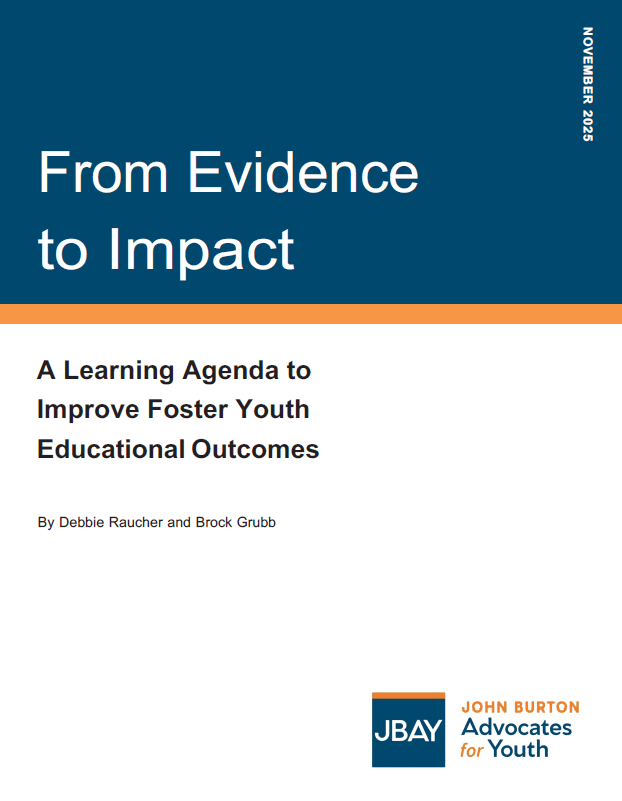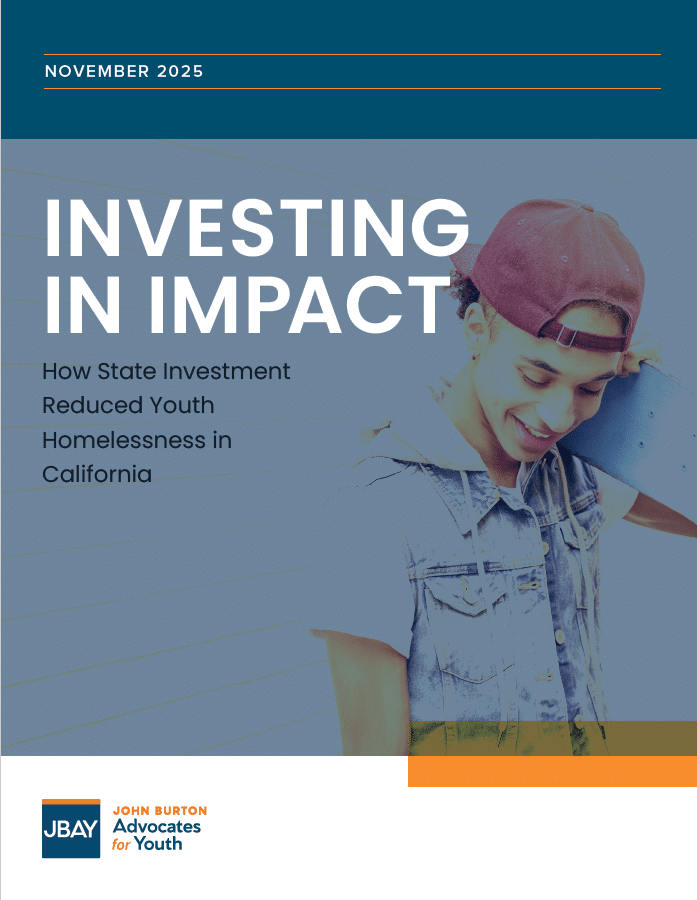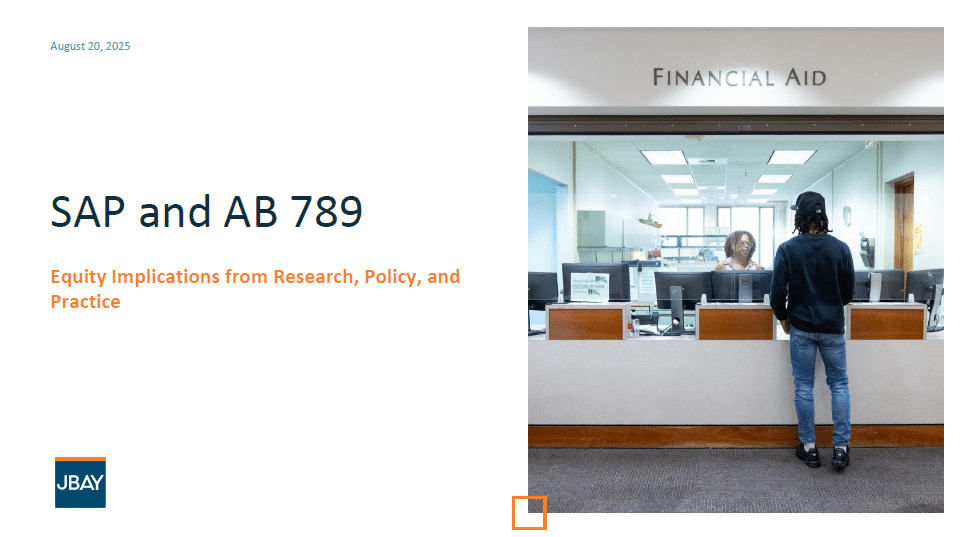This webinar, hosted by John Burton Advocates for Youth (JBAY), provided an in-depth exploration of Satisfactory Academic Progress (SAP) policies and their implications for equity in higher education. The session highlighted findings from JBAY’s multi-year research, including the “Overlooked Obstacle” reports, which revealed how strict SAP requirements disproportionately impact low-income and minoritized students, particularly foster youth and students of color. Key topics included the challenges of maintaining financial aid under SAP standards, the role of AB 789 in standardizing SAP policies across California institutions, and the results of JBAY’s audits of institutional compliance with AB 789. The webinar also shared insights from a comprehensive dataset of California Community Colleges, exploring SAP, financial aid retention, and graduation outcomes for Pell Grant, Cal Grant B, and CCPG recipients.









